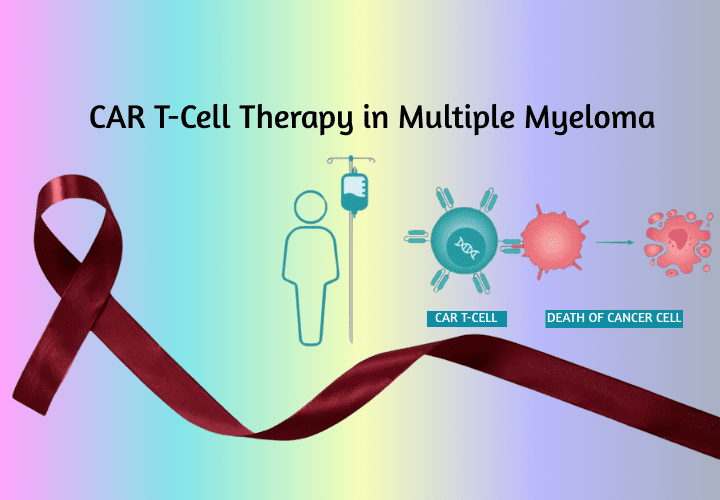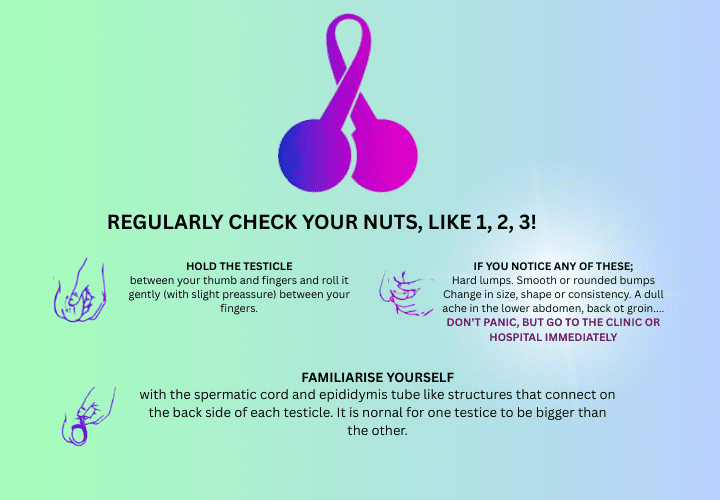Life After CAR-T Cell Therapy: Exploring Time, Hope, and Advancements for Multiple Myeloma

Life After CAR-T Cell Therapy: Exploring Time, Hope, and Advancements for Multiple Myeloma
- onco
- May 7, 2025
For patients living with multiple myeloma, especially those with relapsed or refractory disease, CAR-T cell therapy offers a beacon of hope. This breakthrough immunotherapy has redefined treatment possibilities, extending lives where few options once existed. But what comes after the treatment? What does life look like for patients once they’ve received CAR-T?
In this article, we explore life after CAR-T cell therapy, looking at the recovery timeline, quality of life, ongoing research, and the hope it brings to the multiple myeloma community.
Understanding CAR-T Cell Therapy
Chimeric Antigen Receptor T-cell (CAR-T) therapy is a form of immunotherapy where a patient’s T cells are collected, genetically modified to recognize cancer cells (in multiple myeloma, often targeting the BCMA protein), and then infused back into the patient. These engineered T cells then seek out and destroy myeloma cells.
CAR-T therapy is often used when other treatments have failed, and it has shown remarkable results in clinical trials and early real-world usage. But it’s not a magic bullet. Like all cancer therapies, it comes with challenges and uncertainties—particularly regarding long-term remission.
The Recovery Timeline: What to Expect After CAR-T
After receiving CAR-T cell therapy, patients typically go through several stages of recovery:
- Hospital Stay and Immediate Monitoring (First 1–2 Weeks)
Patients often remain hospitalized after the infusion to monitor for side effects such as:
- Cytokine Release Syndrome (CRS): A common but manageable immune response that causes fever, low blood pressure, and fatigue.
- Neurological Effects: Temporary confusion, difficulty speaking, or disorientation can occur in some patients.
This period is critical for managing complications, and most patients begin to stabilize after a few days.
- Early Recovery at Home (First 30–90 Days)
Once discharged, patients enter a phase of recovery at home. During this time:
- Immune function remains suppressed.
- Regular follow-up appointments are required.
- Energy levels may be low, and patients are advised to avoid crowded places or infections.
Patients are closely monitored with blood tests, imaging, and bone marrow biopsies to assess response.
- Immune Reconstitution (3–6 Months and Beyond)
Rebuilding the immune system is a slow process. Patients may receive supportive treatments such as IVIG (immunoglobulin therapy) and vaccinations. Preventing infections remains a priority.
Fatigue, emotional ups and downs, and fears of relapse are common. Support from caregivers and counseling can be valuable during this time.
Quality of Life After CAR-T Therapy
One of the most exciting aspects of CAR-T cell therapy is the potential for deep, durable responses. Some patients achieve minimal residual disease (MRD)-negative status, meaning no detectable cancer cells—a powerful sign of remission.
Key Quality-of-Life Improvements Reported:
- Relief from bone pain and other myeloma symptoms
- Reduced or no need for continuous chemotherapy
- Improved physical mobility and mental health
- Renewed hope and emotional well-being
Still, many survivors face ongoing challenges like fatigue, neuropathy from previous treatments, or lingering immune weakness.
Psychological Recovery
Life after CAR-T involves mental and emotional recovery as well. Patients often live with a mix of hope and anxiety:
- Hope: Due to the depth of remission and a break from constant treatments
- Fear: Of relapse, unknown long-term effects, and adjusting to a “new normal”
Counseling, survivorship programs, and peer support groups can help ease these transitions.
How Long Does CAR-T Cell Therapy Last?
This is one of the most important—and often difficult—questions.
Clinical trials have shown that some patients remain in remission for 12 months, 18 months, or even longer, with a few reaching multi-year remissions. However, relapse is still possible, and researchers continue to investigate:
- Why some patients relapse after CAR-T
- Whether retreatment is possible
- How to extend the duration of response
The good news is that each year brings new advances, and many patients who relapse after CAR-T now have additional options.
What Happens If Myeloma Returns?
If multiple myeloma returns after CAR-T, the next steps may include:
- Second-line CAR-T therapy (if available)
- Bispecific antibodies targeting other myeloma markers
- Clinical trials offering novel therapies
- Combination treatments using immunotherapy and targeted drugs
Thanks to ongoing innovation, post-CAR-T options are more promising than ever.
Advances and Innovations in CAR-T for Myeloma
The field of CAR-T cell therapy is advancing rapidly. Several next-generation CAR-Ts are being developed to:
- Improve durability of response
- Reduce side effects
- Allow outpatient (non-hospital) infusions
- Target multiple antigens to overcome resistance
Research is also underway to combine CAR-T with other immunotherapies, such as checkpoint inhibitors or bispecific antibodies, to further boost outcomes.
These advancements bring new levels of hope for patients living with multiple myeloma.
Hope for the Future: Survivorship and Beyond
For many patients, CAR-T marks a turning point—not just in treatment, but in mindset.
“I finally got a break from chemotherapy. For the first time in years, I had months without pain. CAR-T gave me a second chance.” — Myeloma Survivor
While the long-term data is still evolving, early results are incredibly promising. CAR-T may not yet be a permanent cure for everyone, but it’s a leap forward toward that goal.
And most importantly, it’s giving patients something that is often in short supply with multiple myeloma: time. Time to travel, time to spend with family, time to dream again.
Living Fully After CAR-T: Tips for Patients
Here are a few guidelines for patients and caregivers navigating life after CAR-T:
- Follow all medical advice and attend follow-up appointments.
- Protect your immune system: Avoid infections and stay up to date with vaccines.
- Monitor your body: Report any symptoms or side effects early.
- Stay active: Gentle movement can improve recovery.
- Seek emotional support: Talk to a counselor or join survivorship groups.
- Celebrate milestones, no matter how small.
Final Thoughts
CAR-T cell therapy is revolutionizing the treatment landscape for multiple myeloma. For patients who have cycled through traditional therapies, CAR-T offers not only clinical response—but renewed hope.
Life after CAR-T may come with uncertainties, but it also comes with possibilities. New research, new treatment combinations, and a growing understanding of the immune system mean that the future for multiple myeloma patients is brighter than ever.
Whether you’re a patient, caregiver, or healthcare provider, know that the story doesn’t end with CAR-T infusion—it’s just the beginning of a new chapter in the fight against multiple myeloma.
Recent Posts
-
Can Testicular Cancer affect fertility?
April 23, 2025
-
Why are Breast Cancer Cases Increasing Around the World?
April 17, 2025




Leave a Reply